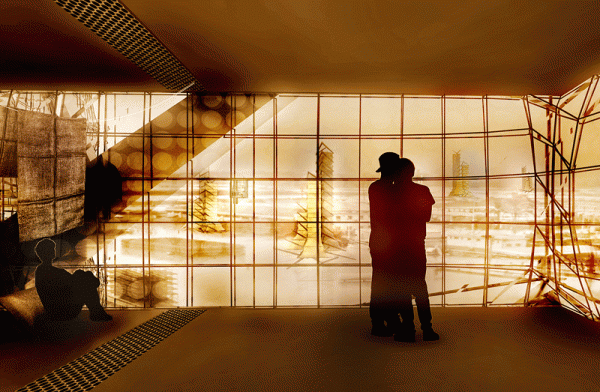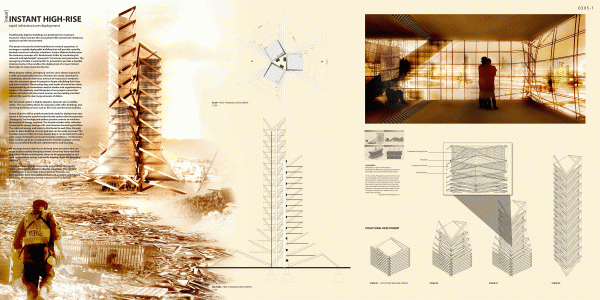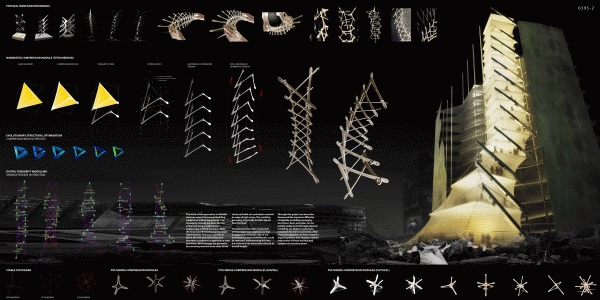Special Mention
2009 Skyscraper Competition
Farzin Lotfi-Jam, Jerome Frumar
Australia
Traditionally, high-rise buildings are predicated by maximum economic return and are thus associated with commercial endeavors and opulence. This project recasts the initial ambition for vertical expansion. It envisages a rapidly deployable building that will provide centrally located resources in disaster situations. Instant High-rise builds upon the visionary concepts of Buckminster Fuller by continuing his research into lightweight ‘synergetic’ structures and geometries. The tensegrity principle is explored for its potential to provide a feasible structural system that enables the deployment of an instant skyscraper in areas struck by disaster.
We envision Instant High-rise projects to be long-term structures that can adapt to their rapidly changing context. Once they have met their immediate infrastructural goals, they can be appropriated to suit sociopolitical objectives and can ultimately help to reshape the emerging local identity.
The tensegrity structural system that has been developed for this proposal is highly adaptive yet incredibly stable. The structure arrives on site flat packed and is deployed by adding tension to the horizontal cables that connect modules. When the cables are fully pre-stressed, the hinged 3D compression members lock into place and elevate the preceding modules. Two floor levels are suspended from the underside of every compression member, which act to increase the overall stiffness of the structure and column free floor space. This versatility allows for synergies with other buildings and surviving building services such as lift cores and electrical facilities. The modular nature of this structure means that it can be tailored to suit a wide range of climactic, environmental, and spatial conditions. Furthermore each module can be pre-programmed to include essential services such as healthcare, administration and housing.
The elastic facade adds to structural stability and includes solar collectors connected to energy storage cells and rainwater harvesting facilities. The captured energy and water is distributed to every floor level via a building services grid contained within each floor slab.
The issue of transportation to disaster sites has meant that overall building weight is of critical importance. The development of a lightweight network structure has been further enhanced using a contemporary engineering method. Bi-directional Evolutionary Structural Optimization (BESO) is used in this proposal to increase the strength to weight ratio of each 3D compression member. BESO iterates the geometry toward an optimum by removing material from areas of low stress and adding material in areas of high stress. The resulting geometry is typically 50-80% lighter than its input. The final optimized components have only three sides but maintain the four critical tetrahedral vertices needed to induce a state of tensional integrity.

















